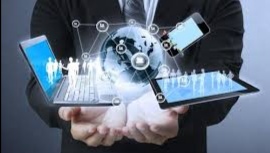Emerging technologies are transforming the way we live, often in ways we barely notice until we pause to reflect. Just a decade ago, the thought of controlling household appliances with our voices, attending meetings in virtual environments, or having artificial intelligence write entire articles seemed far-fetched.
In our world today, these tools are not just possibilities – they’re part of daily life. From the way we communicate to how we work, shop, learn, and even receive healthcare, technology is quietly but steadily reshaping the ordinary.
Take smart homes, for example. Many people now rely on voice assistants like Alexa, Siri, or Google Assistant to handle simple tasks such as turning off the lights, setting alarms, playing music or watching football game. These conveniences may seem minor, but they’re changing our expectations around accessibility and ease. It’s no longer surprising to walk into a friend’s house and hear them casually command a device to lock the doors or adjust the thermostat. This hands-free lifestyle was once a luxury; now it’s becoming mainstream.
Work culture has also undergone a dramatic shift, thanks in large part to digital tools that enable remote collaboration. Cloud platforms, video conferencing apps, and real-time messaging services have turned bedrooms and kitchen tables into productive office spaces. The pandemic certainly accelerated this shift, but the infrastructure and interest were already in place. For many, flexibility has become the new standard, challenging traditional notions of what work should look like and where it should happen.
Healthcare is another area seeing radical change. Wearable devices like smartwatches don’t just count steps anymore; they monitor heart rate, oxygen levels, sleep patterns, and even detect irregularities that could signal more serious conditions. AI is helping doctors interpret scans more accurately and speeding up research in ways previously unimaginable.
Even education has evolved. Classrooms have extended into digital spaces, where students learn from interactive platforms, attend virtual lessons, and collaborate online. Learning is no longer confined to textbooks and chalkboards – it’s dynamic, visual, and personalized. For those with limited access to traditional education, these technologies offer a second chance at knowledge and self-improvement.
Yet, amid all this change, there’s a quiet trade-off. With every convenience comes a new dependency. As we grow more reliant on machines and algorithms, we also face questions around privacy, data security, and the human cost of automation.
Follow SirJoe Online for more
